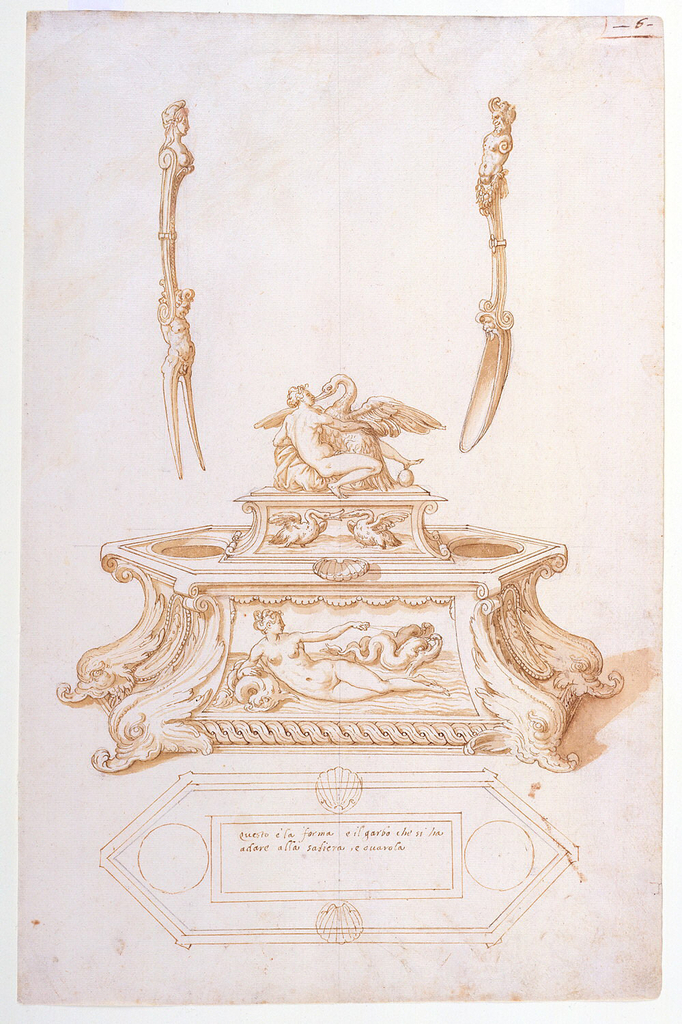Poached, fried, boiled, or roasted, eggs were an important part of the Italian Renaissance diet. In the sixteenth century, Italian chefs Bartolomeo Scappi and Cristoforo da Messisbugo each published cookbooks that detailed recipes and techniques for preparing banquets, and eggs were often on the menu. One of Scappi’s reoccurring recipes was for uovo da bere, or “drinking eggs.” Boiled but barely cooked, the eggs had to be freshly laid (in other words, straight from the chicken!)
According to Scappi’s menus, uovo da bere appeared frequently at the beginning of the first hot course of a banquet. Their preparation was a delicate process, and required impeccable timing. These eggs, housed in their shell, would be served in a specially designed egg dish known as an ovarola.
This delicate ink drawing of a sumptuous combination ovarola and saliera (saltcellar) has been attributed to Ottavio Strada (1550-1612) after a design by Francesco Salviati (1510-1563). It showcases a design for a six-sided form with two holes for uovo da bere. The design features a depiction of Greek myth Leda and the Swan, the two figures perched at the top. The two empty egg cups cunningly reference the myth, suggesting the children that Leda bore after being raped by Zeus, who had disguised himself as a swan. References to the sea allude to the piece’s dual function as a ovarola and a saltcellar. Dolphin heads form the vessel’s feet. The front panel features the figure of Venus, reclining on the surface of the sea, propped up against one dolphin and holding the reins of two others. The plan sketch of the vessel below details seashell cups that protrude from either side, possibly to hold salt. The fantastical designs for the fork and spoon, featuring a satyr and a female bust, most likely were not intended to relate directly to the design for the vessel, but showcase some of the other remarkable tableware that might have accompanied a festive meal.
Caitlin Condell is the Curatorial Assistant for the Drawings, Prints & Graphic Design Department at Cooper Hewitt, Smithsonian Design Museum.
